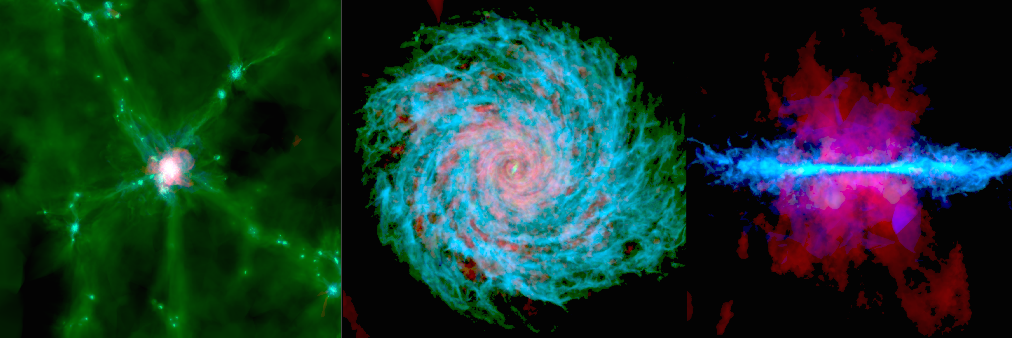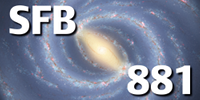SFB 881 "The Milky Way System"
Welcome to the Collaborative Research Center "The Milky Way System"
The origin of the Milky Way and fundamental issues connected with galaxy evolution are the focus of the Collaborative Research Center (Sonderforschungsbereich, SFB) 881 "The Milky Way System" at Heidelberg University. SFB 881 is supported by the German Research Foundation (first funding period: 2011–2014, second funding period: 2015–2018, third funding period: 2019–2022).
 |
The research work of SFB 881 revolves around our own galaxy, the Milky Way, a typical spiral galaxy and hence a member of the most common class of massive galaxies in the universe. The scientists involved in the SFB investigate the origins and evolution of the Milky Way and its surroundings in order to clarify fundamental principles of galaxy formation. Due to our location in the Milky Way, our Galaxy is a unique laboratory for the detailed exploration of the physical processes determining galaxy evolution. It is the only place where we can engage in "Galactic archaeology" and use the stars as fossil indicators of chemical evolution and the cosmic matter cycle. Other goals of the research work done by SFB 881 include to test the predictions of cosmological models on galaxy formation, to explore the assembly history of our Milky Way, to constrain the role of accretion, to investigate the small-scale distribution of dark matter, to study modes of star formation in different Galactic components from molecular clouds to star clusters and field stars, and to trace our Galaxy's star formation history, chemical evolution, and dynamical history across cosmic time.
Heidelberg astronomers are involved in many of the key photometric and spectroscopic surveys of the Milky Way. An important focus of the second funding period of SFB 881 is the scientific analysis of data from the European "Gaia" satellite mission. The theorists in the SFB network run elaborate simulations on a powerful new supercomputer established for the SFB. About 30 graduate students and postdocs are employed in the SFB. Every year, the SFB organizes topical international conferences and workshops. The SFB also offers projects for schools, advanced teacher training, and public lecture series.
The SFB 881 is located at the Zentrum für Astronomie der Universität Heidelberg (ZAH) and includes scientists from the Astronomisches Rechen-Institut (ARI), the Institute of Theoretical Astrophysics (ITA) and the Landessternwarte Königstuhl (LSW). The participating non-university research institutions are the Max Planck Institute of Astronomy (MPIA) and the Heidelberg Institute for Theoretical Studies (HITS). In addition, the Haus der Astronomie (HdA) helps to make research on the Milky Way accessible to the general public.
A public website informing about the SFB 881 can be found here.


